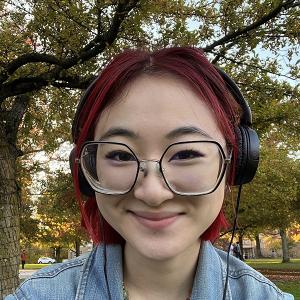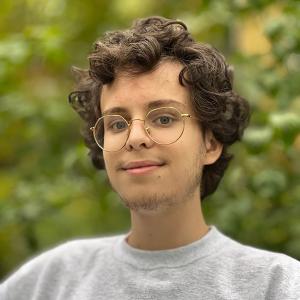New music is alive and well in Oberlin, but so is the old. By new, of course, I mean music written in the past few years. By old, I mean music from the 15th and 16th centuries. I really couldn’t tell you much about what came between.
Let’s take a look at the concerts I attended or performed in this past week. On Friday, I attended the Contemporary Music Ensemble’s performance of four pieces by British composer Rebecca Saunders. The concert was the culminating event of Ms. Saunders’ week-long residency here at Oberlin, during which composition students were given unparalleled opportunities to hear the composer lecture on her pieces, take lessons with her, and have their work critiqued in a masterclass. Not only was the contemporary music division very generous in providing all of these amazing opportunities, but Ms. Saunders was extraordinarily gracious and approachable. Meanwhile, the CME was also diligently rehearsing Ms. Saunders’ extraordinarily challenging pieces with the composer herself. They presented the fruits of their countless hours practicing on Friday’s program, which was an absolutely amazing experience. I was completely blown away by my fellow students’ virtuosity and dedication to such challenging music.
On Saturday, composition professor Lewis Nielson hosted a reception for Ms. Saunders at his house. I stopped by for a bit but had to run off quickly so that I could run a rehearsal of a piece of my own that was to be performed at a concert of student works that evening. I dashed back to the conservatory and helped set up for my performers, Nicolee on horn and Paul on clarinet. As soon as they started running the piece, I knew they had it down. I had been remarkably absent during the rehearsal process, which is not typically the case, but I trusted Nicolee and Paul to bring their own musicianship to interpreting my piece. At the dress rehearsal, it seemed that they certainly had done a fine job.
The student composers concert itself went very well. I wasn’t the only member of my composition studio that had a piece on the program, and it was great to finally hear the pieces that the rest of my classmates had been working on this semester. I was struck by how varied each of our styles is. My piece, “Mu” (as in the Greek letter), was last on the program, and it went off without a hitch. Afterward, I congratulated Nicolee and Paul on a job well done—they really brought a lot to my piece. Then I joined some of my studio-mates for an impromptu get-together at the house of my composition teacher, Seung-Ah Oh. Her husband, composer Peter Adriaansz was there, and Rebecca Saunders and composition professor Josh Levine also showed up. I discovered that Ms. Saunders’ husband is from Argentina, and we chatted for a few minutes about the city of Buenos Aires.
Finally, yesterday I traveled with the Collegium Musicum, a 40-person renaissance choir, to perform this semester’s program, An English Ave, at Calvary Episcopal Church in Pittsburgh. After a week of the most contemporary of contemporary music, it was nice to relax for a moment into the music of 16th-century England. Still, performing a concert is very different from sitting in the audience or even premiering a work of your own. I wasn’t having a great day—mostly because I didn’t get my morning coffee in—and it was hard at first to adjust to the new concert space’s acoustics, but all in all, it went well. I even had a pleasant chat during the short reception following the concert with an audience member who is an oblate at a monastery in Michigan. He was impressed by my Gregorian chanting and said that “a monastery would take me up in two minutes flat” if I ever decided to become a monk. I thanked him for his compliment, but in the back of my mind I doubted that I really had a monastic calling, even if I do chant pretty well.
I intend this post as a sort of “sample pack” of the different musics that I am exposed to here at Oberlin. There are, of course, many other musical traditions that are taught and performed on this campus, and I can’t even begin to come up with a comprehensive list of all of them.


